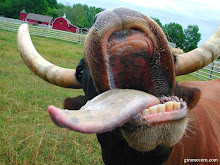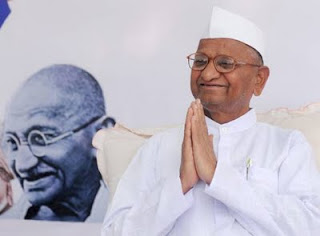About 4,500 candidates appeared for the Territorial Army (TA) written exam in Lucknow last July. Out of these, only 150 were shortlisted to appear before the Preliminary Interview Board (PIB) at Central Command. Among 150 candidates that were interviewed, only 37 were recommended to appear before the Services Selection Board (SSB) at Kapurthala. Furthermore, in our batch of 65 candidates (others being from Western Command) who appeared before the SSB, 22 were screened-in on the first day, and only 3 went on to be recommended by the board. Using this data, the selection rate for an average TA applicant comes out to be < 0.04%, i.e. < 1 in 2500 applicants. Comparing this with CAT (a highly competitive exam for MBA admissions), ~2.5 lakh applicants contest for roughly 10,000 seats at IIMs. This translates into a selection rate of 4%. Thus, a quick calculation reveals that an average applicant is 100 times more likely to make it to an IIM, than as an officer in the Indian Army! The TA selection procedure stretches over a long period of time with written exam being held in July, PIB in October, followed by the final SSB procedure in April. In this blog I will touch upon my personal observations from my 5-day experience at the SSB.
To begin with, we had a very diverse and mature group. The age ranged from 23 to 41 years, and the candidates came from very different fields, i.e. from medicine and research to aviation and merchant navy and many other professions in between. During our stay, a Company Havildar Major (CHM) was appointed as the group organizer, and served as the go-to-person for all of candidates needs during the stay. Typically, the days started with morning tea at 4:30 am. All the meals were to be attended in the mess in proper formal clothing, and utmost discipline was expected from the candidates during their stay.
The SSB procedure seeks to evaluate the candidates on 3 parameters, i.e. Manasa (mind/thoughts), vaacha (speech), and karmana (actions). All candidates are rated on these parameters by 3 different military officers (usually of Lt. Col. Rank). Only when all three evaluations for a candidate intersect at a desired point, a candidate is recommended by the SSB. The evaluators do not talk to each other or share candidate's information until the final day of conference. Moreover, the officers and all the assisting staff are in civil dress on all days but the day of conference. This is probably to elicit a more natural behavior from the candidates. Various tests designed to evaluate a candidate can be characterized into 3 different groups:
- Intelligence tests and psychological pointers
- Personal interview
- Leaderless group tasks, command task, and individual task
The interview is intense (almost 1 hour long), and one needs to prepare much more than I thought. Other than oscillating across the candidate’s life history, random problems are presented and the candidate is expected to come up with a range of possible solutions. Here resourcefulness of ideas is important, and one can readily improve only upon original ideas. The interviewer also judges the passion of the candidate for the army, and one should be able to demonstrate his interest through knowledge of weaponry, military organization, current issues etc.
The 4th day is the best to go out as a group to see the city. We visited the Kapurthala rail coach factory after which we ended up at a local eatery. On the final day, a conference is held where all selecting officers get together and discuss each candidate’s performance. After the conference the candidate is either recommended for commission (after clearing medical requirements), or not-recommended.
I found the 5 days to be full of speculation on the methods of testing. Candidates overanalyze the situations and everything seems pre-planned and like a mind-game being played. This is probably because, unlike all other examinations, in SSB there is no score or feedback given on the performance of candidates. It is a simple recommended or not-recommended decision after the final conference. This leaves many doubts in the minds of candidates, which further lead to speculations. So I decided to delve a little into the evolution of the selection procedure.
The SSB procedure has it’s roots in the War Officer Selection Board (WOSB) which evolved in the British army in 1942 during the second world war. The need was to select able officers quickly by the use of psychological tools as used by Germans. This can be seen from the following conversation in the British House of Commons in 1942:
MP Thomas Horabin commented:
to which MP Dr. Francis Fremantle replied:
A typical WOSB between 1942-44 was as follows:
Day 1
After time to settle in and look around, candidates went to the rooms where they would be set written tests. After being given their numbered armband (candidates all became numbers and had to hide ranks to maintain objectivity), they were addressed by the President who told them ‘about the aims and method of the Board... and described the role of the individual members of the testing staff’.
A break ‘for mid-morning tea or cocoa was followed by the written tests: a life-history questionnaire, three 20-minute intelligence tests, a family-history questionnaire (marked 'Confidential'), and three psychological projection tests. By 5:30pm, candidates were ‘free for the evening’ and the psychological staff and Sergeant Testers assessed the written tests.
Days 2 and 3
Day 4
Experienced candidates will realize a striking similarity between a WOSB developed in 1942, and the present day SSB procedure. Even though, I believe that over the years the SSB has gone ahead to refine the procedure to draw from latest research and also to suit Indian scenario.
At the heart of SSB procedure are the leaderless group tasks that conceal psychological techniques under a military appearance. Solving an obstacle task by creating bridges with planks and ropes is easy. However, convincing and taking the group along is totally different. To add to further conflict among candidates, there is no instruction on whether the candidates are evaluated as individuals or as a group. This conflict is demonstrated in the following figure.
The design of group tasks is practical application of the Field Theory
The selected candidates are probably not the best among the lot. Neither are the rejected candidates not deserving of selection. However, the process ensures that the selected candidates possess the right combination of skills, temperament, and personality that befits an army officer. After all, the cost of selecting a wrong person is huge, for the individual as well as for the military organization. Perhaps a low rate of selection also serves to boost the pride and sense of responsibility that lies on the shoulders of an officer. On our last day we were made to think about famous personalities who did not make it through the SSB, e.g. Amitabh Bachan, Shahrukh Khan, Rahul Dravid and APJ Abdul Kalam. This was probably a dose of consolation. Even more, never ever in my life have a shaved consecutively for 5 days, but for my stay at SSB. Even a small act of shaving made me realize that perfection is not just a sudden burst of enthusiasm, but a sustained effort towards excellence. Going through the stringent procedure, one is convinced of the integrity and rigor of the SSB process. Spending time with the group and quality interactions serve as a mirror to evaluate one’s own self. Taken in the right spirit, a rejection in SSB in fact serves as a further motivation to work-hard, strive for perfection, and comeback to SSB with a dream to live the life as an Indian Army Officer.
Personally for me it was a choice between TA and IIM-A. Had I been recommended in SSB, I would have settled for a mediocre career (my current job) along with a part time commitment to the India Army. This, I thought, would have been a pretty satisfying package as a whole. Perhaps I was wrong. Now that I am not recommended, the goal is to boost my career with a 2 year MBA program at IIM-A. Hopefully in a few years, when I’m in a proper and satisfying career trajectory, I will reappear for the TA examination and clear the SSB to become an officer.
References:
- White, Alice Victoria. From the science of selection to psychologising civvy street: the Tavistock Group, 1939-1948. Diss. University of Kent, 2016.
- Wikipedia contributors. "Field theory (psychology)." Wikipedia, The Free Encyclopedia. Wikipedia, The Free Encyclopedia, 4 Feb. 2017. Web. 27 Apr. 2017.






